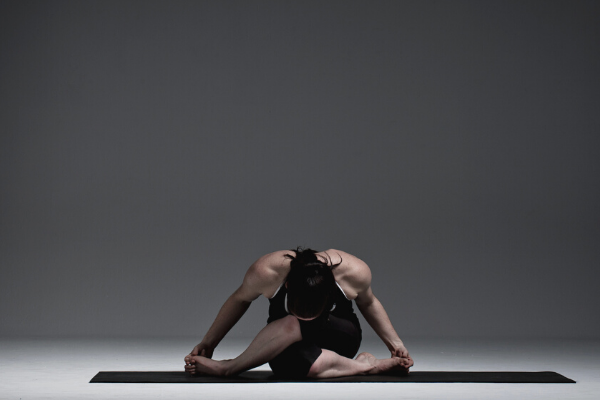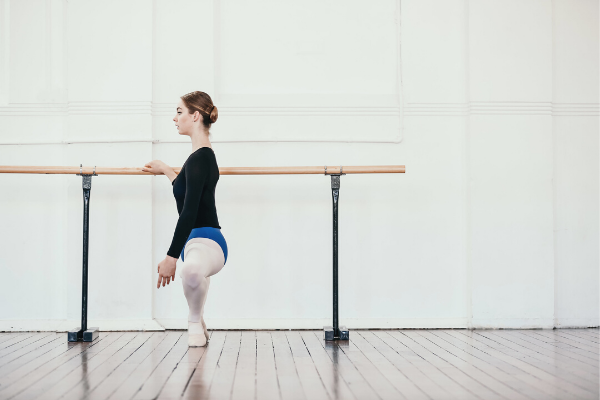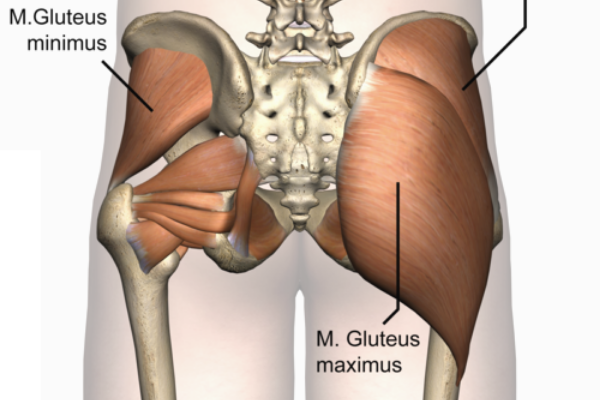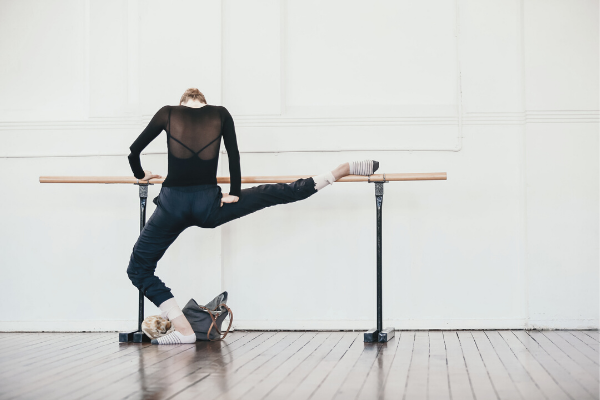Why Shin Splints is not an Accurate Diagnosis
I get very frustrated when dancers say that they have been diagnosed with “Shin Splints.” Shin splints is an overarching term that actually covers at least three completely different injuries. So, if you do get diagnosed with this, please ask the practitioner for more information. Normally it will be one of the following conditions:
- Anterior Compartment Syndrome
- Tibial Stress Fractures
- Medial Tibial Stress Syndrome
In this video we go through:
- What each of these injuries are
- Why it happens
- What we can do to fix them
Anterior Compartment Syndrome
- What it is: On the front of your shin you have a muscle called your Tibialis Anterior which is interesting in that it has a thick fascial sheath that surrounds it. If this muscle swells due to overwork or increased blood flow it can create a lot of pressure inside the compartment, which can be very uncomfortable. It is very important to correctly treat this condition as soon as you are aware of it, as once it starts, it is quite hard to settle down.
- Why it happens: Anterior Compartment Syndrome can happen either as a chronic injury due to the Tibialis Anterior (i.e. when trying to hold their turnout in first or fifth position) or as an acute injury due to trauma and acute swelling.
- What to do about it: Make sure that the Tibialis Anterior tendon at the front of the ankle is mostly relaxed when standing in first and fifth positions. A little flicking is ok, constant gripping is not! Most of the focus in rehab is on releasing fascial tension through the lower leg, but also on retraining turnout control from the hip, rather than trying to brace the foot with the tendons at the front of the ankle.
Stress Fractures of the Tibia
- What it is: Stress Fractures can occur due to overload, or as an insufficiency fracture when the bone is not able to withstand the normal load. Stress fractures will usually be felt as an acute pain when pressing on the tibia, but may also present with aching, deep pain at night.
- Why it Happens: Stress Fractures of the Tibia occur for a different reason than the Anterior Compartment syndrome. Often, they are related to a lack of shock absorption when landing from jumps. When landing from a jump, there should be a certain amount of deformation in the midfoot to absorb the load as you go into a fondu. If the midfoot is very stiff, and you land with a thump the load is not absorbed well and all of the load goes up into the tibia, and over time can result in stress fractures.
- What to do about it: The rehab for Tibial Stress Fractures will require a period of relative rest, to reduce the load through the bone, but this does not necessarily involve being off the leg completely. Treatment should be focussed on mobilising the midfoot and developing the correct mechanics and strength to control the landing of your jumps, as well as developing better strategies for controlling the dynamics of the hips.
Medial Tibial Stress Syndrome
- What it is: Medial Tibial Stress Syndrome is felt more on the inner border of tibia which is related to where the Tibias Posterior attaches to your tibia.
- Why it happens: If going into a plié or landing from a jump many dancers brace the inner aspect of the ankle with the Tibialis Posterior in an attempt prevent the foot from rolling in. This can cause a lot overuse of the muscle and of pulling up of the tissues where they attach on the bone, creating tenderness on the medial shin bone.
- What to do about it: While it is important not to excessively roll in when landing jumps, it is important to control the leg alignment from the top of the hip, rather than bracing the inner aspect of the ankle. This is a very common injury in dancers who have been told off for "rolling in”.

If you have had any pain in the shins please don’t accept “Shin Splints" as a diagnosis. There are so many reasons why pan in the shins occurs and it’s really important that you understand exactly what the injury is, what factors led to it developing, and how to treat it in order to get you back dancing as soon as possible.
If you do have any issues with your shins, we would love to see you in the clinic to work on an effective management strategy. If you are working remotely we really recommend that you look into the Will I Ever Dance Again program which helps you keep condition in the rest of the body while you do the appropriate rehab for the rest of your body.
Injury & Foot Resources
If you are looking to delve deeper into this topic, check out the following programs:
- Will I Ever Dance Again: The "Will I Ever Dance Again?" program is perfect if you are unable to train at full capacity, whether this is due to foot injury, surgery, an accident or illness outside of the studio. It helps you build back to full capacity gradually while maintaining strength, flexibility and control in the rest of the body.
- Level One Dance Teacher and Therapist Training: This unique course covers a multitude of assessment and treatment techniques to individualise a dancer's training. With special focuses on Postural Control, Core Stability, Flexibility, Basic Classical technique, The Dancers Hip, Allegro, Spinal Mobility and Arabesques, it is suitable for anyone working closely with dancers.







